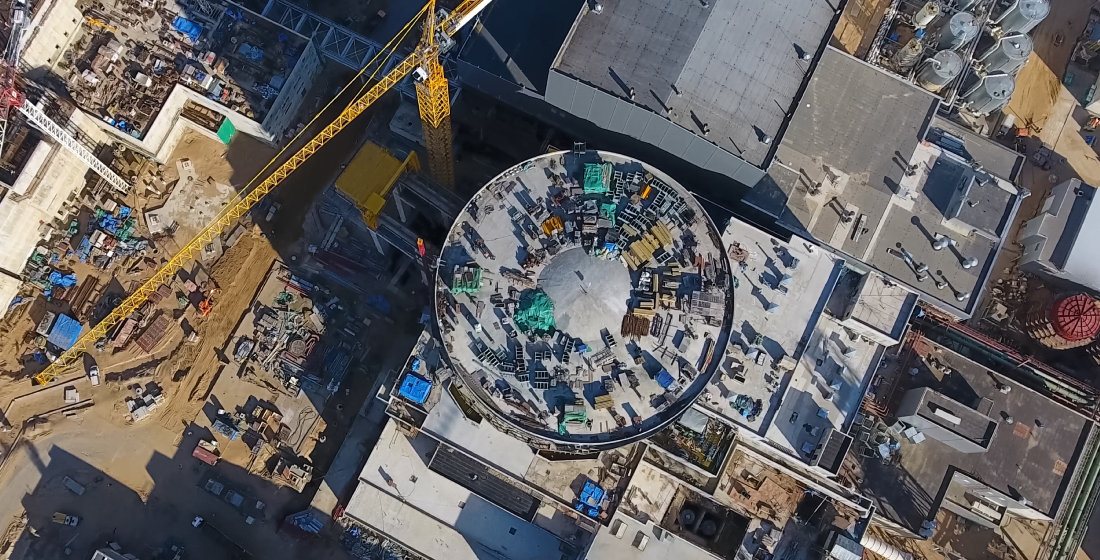TXF's top global export finance trends 2020
To inaugurate TXF Global Virtual 2020, the team at TXF put together the top export finance trends which are expected to evolve globally over the course of the year.

1. Play a Part in History: Expect higher volumes and a leading role for export finance
If the GFC provides a referential template for how we navigate today’s crisis, then Covid-19 will be a boon for ECA volumes over the next five years. For any corporate looking for seven+ years financing, ECA cover is surely the most compelling option; we just need to make sure those who are searching know where to look.
ECAs will be called upon to provide packages of support through schemes and products for exporters in their home countries. Flexibility and efficiency will be key, and many customers will seek bridge financing, deadline extensions, 100% guarantees, and waivers. Accordingly, governments will be asked to increase their funding to ECAs.
Incentivising the buyer side will be crucial. This is where banks come in, striving to get the word out to their clients that this is the right product for cost effective, reliable long-term finance.
2. Come Together: Cooperation will be the name of the game
Whether working together on complex deal restructurings or collaborating on future project financings, cooperation will be essential.
Re-negotiation will be necessary as many sectors struggle to come to terms with the impact of Covid-19. Oil and gas, shipping, aerospace, airport construction, certain transport links and real estate command particular attention. Significant focus will be directed towards emerging markets – particularly oil reliant African economies where large export and project finance dets have developed. Work outs will be tricky in some cases, but essential in all.
All of this will mean increased work for ECAs, banks, insurers, lawyers, and corporate treasury teams, who each need to understand the challenges the others are facing in order to find solutions that work for all. Thankfully, a spirit of collaboration runs deep in export finance and there is no better group of people to take on this challenge.
3. One World One Dream: Direct lending and DFI collaboration to grow
ECAs will step up the volume of guarantees they will provide in the coming years. However, certain projects will be challenging to finance as the risk outlook has changed so dramatically. Expect greater use of direct lending and increased collaboration between ECAs and DFIs - especially on riskier projects that stretch commercial bank appetite.
ECAs may also have to take a greater role within confessional finance arrangements, as governments use all levers they can to get economies going again. There is a risk that the increased onus on ECAs could crowd others out, but the complexities of multi-party involvement mean that we expect the arranging role from banks to remain crucial.
4. Coexistence with Nature: Sustainability to be embedded in growth strategies
Many seek to pursue a green recovery from Covid-19. The ECA sector, under increasing scrutiny, will continue to push a sustainable agenda within their export finance programmes. The low price of oil and gas is likely to cause issues for projects in that area, but there is only so much ECAs will be able to do in the long run; they will no longer be able to go the extra mile to support the oil industry.
Renewable energy is likely to entrench itself as the leading asset class in project finance and ECAs will eventually switch the sizes of their oil budgets and their renewables budgets.
The backdrop is becoming ever more conducive, from clearer definitions, coordinated working groups at the industry association level, and better adopted taxonomy amidst governments.
5. A New World: Technology can satisfy the need for speed
As Covid-19 recovery will increase demand for ECAs and export finance, speed of execution is going to be paramount. Digitalisation, smarter interfaces, and technology solutions will ease the process, making export finance solutions accessible to more companies.
However, this alone will not solve long-standing issues of an often slow moving and almost always complex product. Greater autonomy further down the decision-making chain, and ECAs having more staff, will help the effort to up the pace on transactions.
6. Light the Fire Within: New industrial opportunities will emerge
Covid-19 will force governments to reassess their industrialisation priorities and diversify their industrial growth plans. Whilst these requirements are immediate, they will naturally take some time to evolve in most cases. Oil producing countries are classic cases for industrial diversification. Of course this impacts oil dominated African markets, but also touches certain Gulf governments, namely Saudi Arabia, Bahrain, Oman and Qatar.
African oil producers will - or certainly should – look to increase domestic oil storage, downstream product enhancement, and consider spin-off industries and value-added enhancement for other raw materials exported. Saudi Arabia can expect to draw cash from its sovereign wealth fund to expand its industrial diversification programme, but this will be extensive, requiring capital equipment imports and ECA support from supplying countries.
7. Passion. Connected: Cruise and aviation to face fluctuating fortunes
Some sectors have been harder hit by the crisis than others, and cruise and aviation both sit at the top of that list. It remains to be seen whether a cruise sector that was in a period of unprecedented growth will ever fully recover. ECAs had financed $34bn in the cruise sector over the past 3 years alone, and significant restructuring will now be required. That said, the moves that ECAs and banks have already made to protect both borrowers and lenders show the value of the export finance product.
Aircraft has also been badly hit and the next year could be a whirlwind of airline bankruptcies, bailouts and cancelled orders. But in the medium term, export credit could well be the tool of choice for aircraft finance. After the ASU, the SFO investigation engulfing Airbus, and the closure of US ExIm, ECA-backed aircraft finance fell to an all-time low, having been responsible for a record 40% of all new financings in the years after the GFC. While the lofty heights of 40% might not be replicated, expect export finance to play a leading role as aircraft begin to be delivered again.
8. Friends for Life: Covid-19 challenges will accelerate OECD changes
There seems to be consensus at the very least that the OECD consensus needs updating. Any agreements on the OECD Arrangement always to take a long time, partly owing to the far-reaching consequences such changes carry. Many feel that the impact of Covid-19 will provide an imperative to speed up the process of much needed change.
In particular, the issue of local content is somewhat contentious and is one that can expect to be made more flexible. At the same time, the often vexing issue of whether certain OECD players are using ‘untied debt’ or ‘tied debt’ is one which needs to be addressed as quickly as possible.
Many are also calling for greater incentives for green and social projects, above and beyond the increased tenor for renewables transactions. Export finance has an opportunity to be front and centre of the green revolution, and the OECD could play a pivotal role.
9. United by Emotion: The further politicisation of export finance
As government spending rises, ECAs and the projects they support will become ever more public. While global trade is stalling due to the effects of the lockdown, protectionist and nationalist rhetoric related to securing supply chains and trade wars is intensifying. As such, the further politicisation of ECAs is somewhat inevitable.
US Exim can be expected to up the ante in its challenge to China Exim/CDB/Sinosure and overall Chinese state support. Covid-19 has brought about greater friction for global superpower dominance and has intensified the pre-existing ‘trade-war’.
When US Exim was reauthorised in Dec 2019, it was directed to establish the new ‘Program on China and Transformational Exports’ – designed to support loans, guarantees and other products at rates and terms that were competitive with China’s. One-fifth of the agency’s total financing authority, amounting to some $27 billion, is to be used to support that programme specifically.
10. With Glowing Hearts: A buoyant secondary market for export finance assets
Banks’ desires to recycle their balance sheet to satisfy demand, plus any increase in margin in the primary market, might mean we see more movement of deals in the secondary market.
That could in turn attract a number of institutional investors who have until now been unable to get the yields they require, for the work needed to be undertaken to buy export finance assets. The possibility of 100% cover from ECAs would make this outcome more likely.
Record low interest rates in some other money markets will add to the appeal of the export finance sector, as well as its real economy contribution.
11. Passion Lives Here: PRI faces internal and external tests
The CPRI market has undergone significant growth over the past few years, with more underwriters and more capacity in the market than ever. But now European governments have had to back up credit insurers against a tsunami of Covid-19-related claims and the threat of downgrades.
However well performing or profitable the CPRI market has been, it will do very well to avoid a fallout from this. Ultimately the wider insurance market is still susceptible to unpredictable winds, and the knock-on effect is felt by all.
Ironically, within the world of export finance, demand for CPRI is likely to be higher than ever, as uncovered tranches disappear, and clients desire speed and reinsurance. Moreover, given the extra exposures and product offerings they are making amid the pandemic, ECAs will be looking to reinsure more of their transactions. It is pertinent to note that before US ExIm received reauthorisation in December 2019, the US CPRI market advocated strongly for a greater slice of business through reinsurance policies with the ECA.
If the private insurance community can fight against cuts internally, they may well reward their employers with solid volume of highly priced exposures.
12. Harmony and Progress: Trust and relationships rise to the top
In many ways, trade and export finance has always been about trust and relationships, so it might seem like a question of 'What's new?'
But the underlying fact is that as players have come and gone, as tech solutions have been touted and followed, as prices have occasionally taken privilege over partnerships, there are ways in which trust has been relegated or at least not given the pride of place it fully deserves. Now, in a wider culture of fake news, increased cyber risk, rising instances of fraud in some sectors, and of course a pandemic the like of which we haven’t seen for generations, the topic of trust becomes paramount once again. Who can you trust through the fog of uncertainty? Who is reliable, dependable, and credible enough to warrant your continued business with them – especially as the stakes are higher than ever before.
After a few years of (not wrongly and very understandably) focusing on things like automation and scale, we are likely to be in for a period where good old-fashioned trust becomes the most important thing once again.





